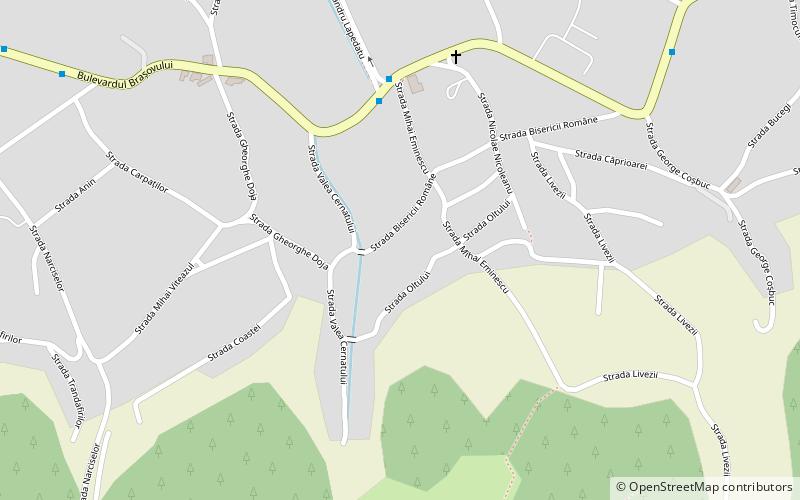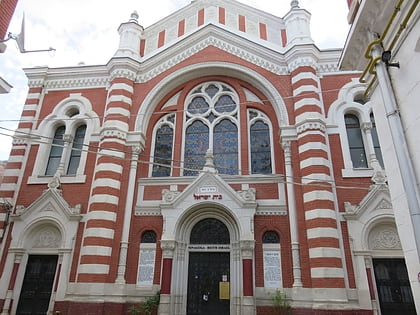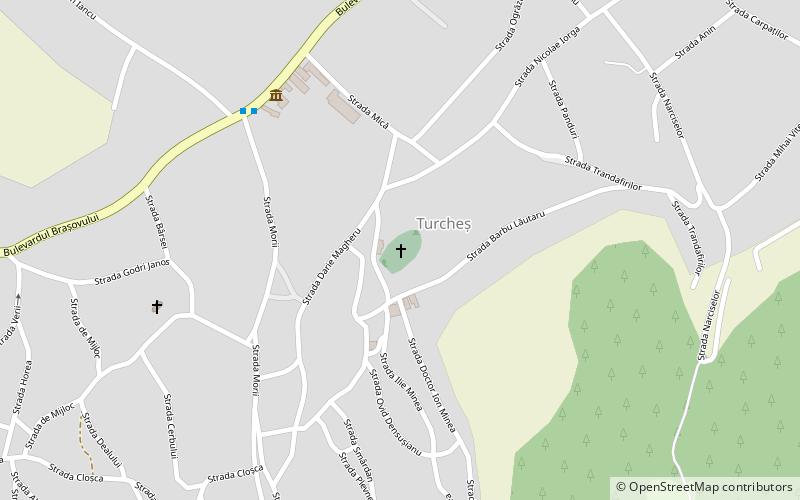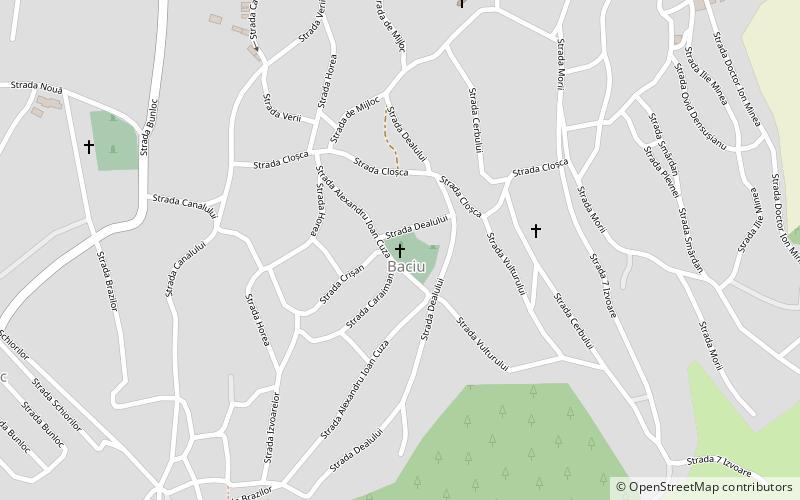Cernatu Church, Săcele
#1 among attractions in Săcele


Facts and practical information
The Cernatu Church is a Romanian Orthodox church located on Bisericii Române Street, Săcele, Romania. Located in Cernatu, a former village that is now a district of Săcele, it is dedicated to Saint Nicholas. ()
Săcele Romania
Cernatu Church – popular in the area (distance from the attraction)
Nearby attractions include: Seven Ladders Canyon, Tâmpa, Sinagoga Beth Israel, Brașovia Citadel.
 Natural attraction, Canyon, Park
Natural attraction, Canyon, ParkSeven Ladders Canyon
105 min walk • Nestled in the heart of Romania's Carpathian Mountains lies a natural marvel known as Seven Ladders Canyon (Canionul Șapte Scări in Romanian). This stunning canyon, famed for its rugged beauty and thrilling adventure opportunities, is a magnet for outdoor enthusiasts...
 Scenic mountain with trails and city views
Scenic mountain with trails and city viewsTâmpa, Brașov
129 min walk • Tâmpa Mountain is a natural landmark that looms over the picturesque city of Brașov, Romania. This prominent peak, part of the Southern Carpathians, offers stunning views of the old town and the surrounding landscapes. Rising to an elevation of 960 meters, Tâmpa is...
 Synagogue
SynagogueSinagoga Beth Israel, Brașov
138 min walk • Nestled in the heart of Brașov, a picturesque city in Romania, stands the Sinagoga Beth Israel – a testament to the rich Jewish heritage of the region. This synagogue, a beacon of religious and cultural life, serves as a poignant reminder of the once-thriving Jewish...
 Forts and castles
Forts and castlesBrașovia Citadel, Brașov
129 min walk • Perched atop a hill in the historic city of Brașov, Romania, the Brașovia Citadel is a testament to the area's rich medieval past. This fortress, with origins tracing back to the 13th century, was a key defensive structure for the Transylvanian Saxons in the face of...
 Mountain range popular for hiking
Mountain range popular for hikingPiatra Mare Mountains
128 min walk • Nestled in the heart of Romania, the Piatra Mare Mountains rise as an emblem of natural splendor, offering breathtaking views and a rugged landscape that captivates outdoor enthusiasts and adventurers alike. Known for their dramatic cliff faces, these mountains are a...
 Church
ChurchDârste Church, Brașov
50 min walk • The Dârste Church is a Romanian Orthodox church located at 255 Calea București, Brașov, Romania. Located in Dârste, a former village that is now a district of Brașov, it is dedicated to the Holy Trinity.
 Museum, History museum
Museum, History museumMuseum of Urban Civilization, Brașov
137 min walk • The Museum of Urban Civilization is a museum in Brașov, Romania. The museum is located on the south side of the Piața Sfatului, the main historic square of the city. To the north in the centre of the square is the Brașov County Museum of History and to the southwest is the Black Church.
 Church
ChurchTurcheș Church, Săcele
17 min walk • The Turcheș Church is a Romanian Orthodox church located at 227-232 Ilie Minea Street, Săcele, Romania. Located in Turcheș, a former village that is now a district of Săcele, it is dedicated to the Dormition of the Theotokos.
 Landmark narrowest street in the city
Landmark narrowest street in the cityStrada Sforii, Brașov
137 min walk • Strada Sforii is the narrowest street in the city of Brașov, Romania. It is believed to be one of the narrowest streets in Europe. It is situated near Șchei Gate and it is perpendicular to Strada Cerbului. It was initially built as a corridor that firemen could use, and it is first mentioned in 17th century documents.
 Church, Baroque architecture
Church, Baroque architectureBaciu Church, Săcele
28 min walk • The Baciu Church is a Romanian Orthodox church located at 56 Alexandru Ioan Cuza Street, Săcele, Romania. Located in Baciu, a former village that is now a district of Săcele, it is dedicated to Saint Nicholas.
 Church, Baroque architecture
Church, Baroque architectureFranciscan Church, Brașov
136 min walk • The Franciscan Church in Brașov, Romania, is situated in the old town of Brașov at 7 Sf. Ioan street. It was built in Gothic style and underwent numerous changes during the Renaissance and later in the Baroque period. The church has been in the current form since 1711, hence the dominant Baroque style.
